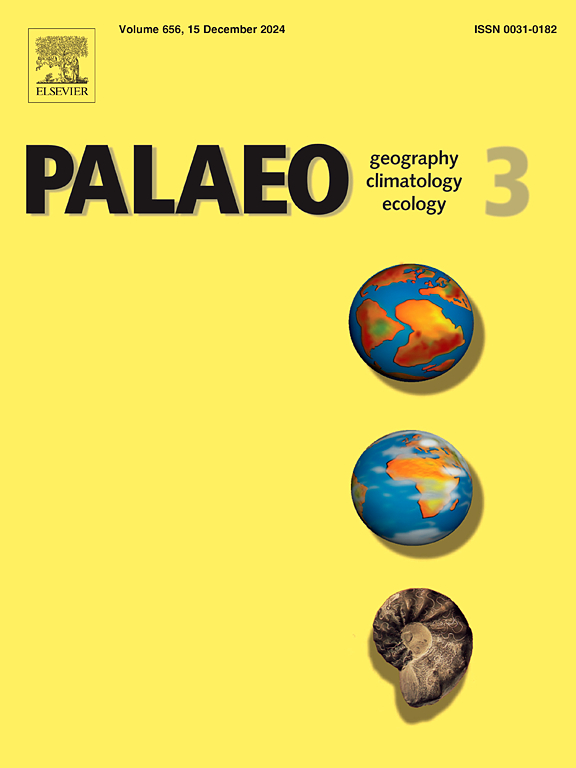Editorial preface to the special issue: Palaeoecology and taphonomy of small mammals: Implications for Quaternary human occupations and environmental reconstruction
IF 2.6
2区 地球科学
Q2 GEOGRAPHY, PHYSICAL
Palaeogeography, Palaeoclimatology, Palaeoecology
Pub Date : 2025-01-31
DOI:10.1016/j.palaeo.2025.112787
引用次数: 0
Abstract
This Virtual Special Issue (VSI) presents research on the taxonomy, paleoecology and taphonomy of micromammals (also referred to as small mammals), with a focus on their role in understanding Quaternary environmental changes and human occupation. Micromammals, due to their sensitivity to climate and habitat shifts, serve as critical indicators of past environments, offering valuable insights into landscape evolution and human interactions with ecosystems, fauna, and changing environmental conditions. The articles in this VSI derive from the 4th Microvertebrate Working Group Meeting, held at the University of Tübingen, Germany in 2022. The VSI covers a wide range of topics, including biochronology, paleobiogeography, paleoecology, and taphonomy. Studies from Armenia, Italy, Argentina, Belgium, and the Iberian Peninsula, among other areas, focus on reconstructing past environments using micromammal assemblages, and employ a variety of methods and techniques such as geometric morphometrics, stable isotope analysis, and paleoclimatic models. These reconstructions offer new perspectives on key periods of environmental and climatic change during the Pleistocene and Holocene, including human dispersals, resource exploitation strategies, and faunal adaptations to climate shifts. In addition, several papers address taphonomic processes, including the role of predators in shaping fossil assemblages and the preservation of environmental signals in the archaeological record. This VSI highlights the significance of micromammal studies in broadening our understanding of Quaternary ecosystems and human prehistory, while also contributing to methodological advances in paleoecological and taphonomic research.
求助全文
约1分钟内获得全文
求助全文
来源期刊
CiteScore
5.90
自引率
10.00%
发文量
398
审稿时长
3.8 months
期刊介绍:
Palaeogeography, Palaeoclimatology, Palaeoecology is an international medium for the publication of high quality and multidisciplinary, original studies and comprehensive reviews in the field of palaeo-environmental geology. The journal aims at bringing together data with global implications from research in the many different disciplines involved in palaeo-environmental investigations.
By cutting across the boundaries of established sciences, it provides an interdisciplinary forum where issues of general interest can be discussed.

 求助内容:
求助内容: 应助结果提醒方式:
应助结果提醒方式:


